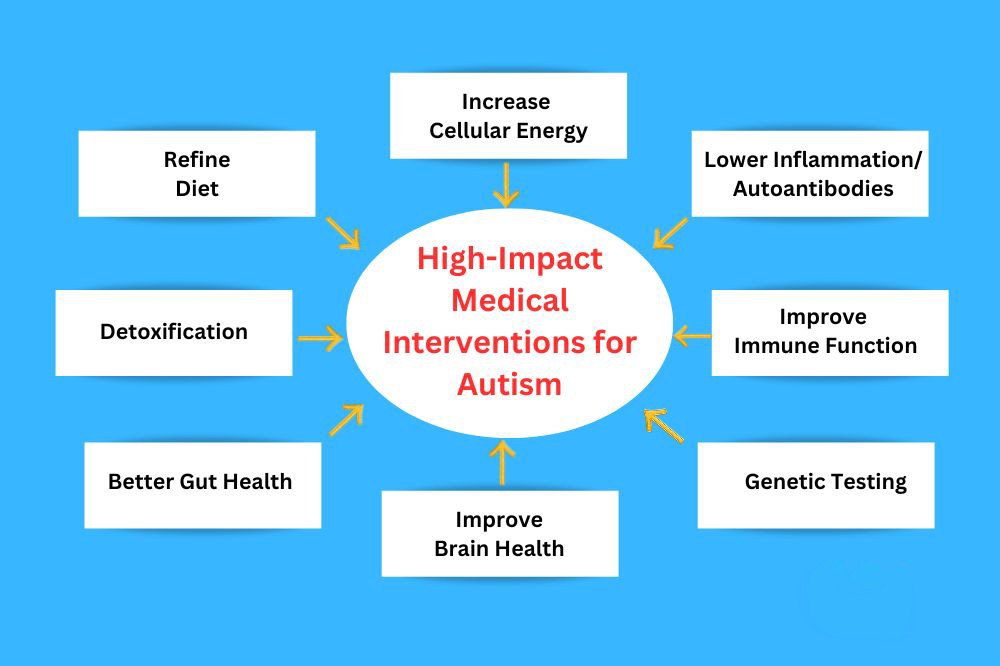Obtaining Funding for an AAC Device

All contents of this resource were created for informational purposes only and are not intended to be a substitute for professional advice, diagnosis, or treatment. Always seek the advice of your physician, therapist, or other qualified health providers with any questions or concerns you may have.
For many people with autism, iPads literally give them a voice. Unfortunately, iPads aren’t cheap. Even the least expensive iPad is unaffordable for families who already have enormous out-of-pocket medical expenses. Fortunately, iPads are a viable Alternative and Augmentative Communication (AAC) modality, so there are several ways to obtain funding for them. Those options include the public-school system, your state’s Office of Vocational Rehabilitation, private insurance, Medicaid, and grants/scholarships.
In order to get an iPad funded through your school district or insurance company, you will need to prove that it is necessary. However, the term “necessary” is relative, the meaning of which depends on who you’re talking to. For example:
- Insurance companies are looking for medical necessity.
- i.e., if a medical condition, such as Apraxia, limits your child’s ability to speak.
- School districts are looking for educational necessity.
- i.e., when an iPad allows your child to participate in a Free and Public Education (FAPE).
Public School
Start by asking your child’s school. After all, this is who SHOULD be providing your child’s iPad – or any other AAC device.
Accordingly, the process for obtaining an iPad for AAC is the same as it is with any Assistive Technology device:
- Begin by asking (in writing!) for an Assistive Technology evaluation from the school.
- Specify that the evaluator should have AAC experience, using iPads as an AAC modality (and has access to one for the evaluation – it’s astounding how many don’t).
- Many will evaluate how your child does with low-tech, medium-tech, and high-tech modalities.
- Then, if the evaluation indicates that your child qualifies for an iPad as an AAC modality, add it to their IEP. Be sure to include the following details:
- Training for you, your child, and any staff who interacts with your child at school
- Replacement warranty
- All of the apps you will need
- NOTE: the evaluation should define the apps that best fit your child’s individualized needs. This is an essential part of the evaluation process and needs to be in the final document.
- Also, rewrite all of your applicable IEP goals to include the phrase “with verbal output” so that they are using the iPad in class and everywhere your child goes with school staff.
- Last but not least, make sure you specify in the IEP that your child needs the device 24 hours a day, 7 days a week, 365 days a year. Doing so will ensure they can take it home and keep it with them. After all, your child should be able to communicate all of the time, not just in certain circumstances.
For additional tips more tips on obtaining an iPad for AAC through the school, please read PrAACtical AAC’s How I Do It: AAC in the IEP.
AAC Funding Through Your State’s Office Of Vocational Rehabilitation Services
Each state has a federally funded Office of Vocational Rehabilitation (OVR) that provides services to help individuals with disabilities make career plans, learn job skills, obtain and maintain employment, and coordinate independent living services. Sometimes, vocational rehabilitation services will provide funding for assistive technology if it will help someone achieve those goals.
Because eligibility requirements and services vary by state, you will need to contact your state’s OVR for more information.
AAC Funding Through Insurance Or Medicaid
If you cannot obtain an iPad from the school or your state’s OVR, you can try through your insurance company.
Insurance
Contact your insurance company to find out about applying for one as part of their DME – Durable Medical Equipment. There will be special forms and processes unique to your Insurance plan. The insurance company can direct you to get the forms, what coverage you may have for DME, and how to apply.
Likewise, if you have a Health Savings Account (HSA), check to see if it will cover an AT device, as some have been able to obtain an iPad through with HSA funds.
Medicaid
Suppose you have both private insurance and Medicaid. In that case, you MUST apply through your private insurance first and be denied before you can apply to Medicaid because Medicaid is always the payer of last resort.
However, if you only have Medicaid, you may only need to provide letters of necessity from your Medicaid-provider speech and primary care physicians. Your Medicaid caseworker can walk you through the process of applying for an AT/AC device under Durable Medical Equipment (DME).
Letters of Necessity
Below are sample letters you can model when applying for private insurance or Medicaid to cover an AT/AC device.
Sample Letter from a Speech Therapist:
To Whom It May Concern:
I am writing on behalf of Johnny Jones. Johnny is a 15 year old male, with diagnoses of autism and apraxia that has been involved in speech therapy at our facility since 2004. Focus of therapy includes increasing functional communication through verbal and cognitive tasks. Johnny is a delightful young man and participates well in therapy. His verbal expression is characterized by 1-2 word responses to questions with very limited initiation. He is able to speak in complete sentences, however typically needs prompting or a verbal model to do so.
Given this communication level and Johnny’s interest and motivation with electronic devices, it was decided Johnny would benefit from an augmentative and alternative communication assessment. Over the course of treatment sessions, I have evaluated Johnny with several different forms of augmentative communication. The PECs system (low-tech), a Dynavox high-tech device and most recently Apple’s iPad (high tech) with Tap to Talk communication application.
Given Johnny’s functional gross motor and fine motor coordination, Johnny was able to manually access the electronic devices without difficulty. He manipulated a 6-cell screen independently and was able to communicate wants/needs instantly with both devices. For example, when given ‘Wh’ questions (i.e. What would you like for lunch today? He accessed the food page and made his selection among a field of 6 with 100% accuracy). Johnny was able to utilize the touch screen keypad on both the Dynavox and the iPad to spell 5-10 letter words independently and to produce structured sentences with cues. After typing the words or sentences he is able to independently press the prompt cue to have the words spoken on the devices.
Johnny benefitted from both of the high tech devices over the low tech PECs system because of the ability of the high tech devices to produce verbal output based on Johnny’s selection. Johnny verbally repeated the devices output messages which is exciting to watch this type of cueing unfold. I was impressed with Johnny’s ease and ability to manipulate the Apple iPad with very little instruction. His inquisitive mind and familiarity with electronic devices assisted in his ability to work the device without difficulty.
I am recommending the Apple iPad with TapToTalk and Prologuo2 augmentative communication application for Johnny. This device will benefit Johnny’s communication as detailed above as well as academically through the many education applications available for download to the device. The iPad is superior to Dynavox and the PECs system for Johnny’s needs, in the diversity of the device, the growth potential through a variety of applications available as Johnny’s abilities and interest change. The iPad 64GB 3G (so that Johnny can utilize when he travels as well) runs approximately $899 versus the Dynavox devices that run between $6000-$8000. I strongly believe that the iPad will enhance Johnny’s expressive and receptive language skills and home programs and significantly improve Johnny’s quality of life through a valuable communication approach and educational opportunities.
Sample Letter from a Behavior Therapist:
To Whom It May Concern:
This letter is in reference to Johnny Jones. Johnny is currently involved with Youth Behavioral Services, Inc. and works in five general goal areas. Johnny is supported with his Environmental Comprehension, Social/Communication skills, Self-help/Awareness skills, Safety, and Behavioral Management skills. Two of the most prominent barriers we are facing are constant self-talk and limited communication skills (both receptively and expressively). Through utilization of an iPad, Johnny can enhance in all goal areas and overcome the barriers that impeded his progress.
The user-friendly applications and the immediate response time the iPad provides are big motivating factors that increase the success of the iPad in comparison to other devices. With the ability to download almost unlimited programs, we are not committed to the use of one single program which may or may not meet all of Johnny’s needs. The recommendation is for the use of an iPad ______, so it can be used out in the community, that has ______gb to support the applications needed for his goals. With this device, we can address all goal areas and gain generalization and cohesion with our goals.
Through the use of the iPad, Johnny will have the ability to appropriately communicate with those around him, both expressively and receptively. He will enhance his quality of life and he will be able to participate in his community as a functional member.
Sample Letter from a Pediatrician/Medicaid Provider:
I am writing to request authorization for payment for an augmentative/alternative electronic communication system (AAC) for Johnny. Johnny has autism and Apraxia, which has caused a severe disability affecting his speech and language. I recently had the pleasure of seeing Johnny following an extensive Augmentative Communication Evaluation at Speech Therapy Center Inc. This evaluation was conducted to examine some of Johnny’s communication impairments related to Autism and Apraxia. A copy of the AAC evaluation recommendation is included with this letter.
Johnny has never used an AAC device in the past. Several different AAC devices were tried with Johnny as part of the evaluation and one device was found to be the most appropriate for him in order to improve his communication ability. The recommended device is the Apple iPad, a speech output communication system. Johnny has sufficient receptive language skills and the use of this device will help him further his expressive language abilities.
This AAC device is medically necessary in order for Johnny to be able to indicate his physical and health status (such as giving details about how he is feeling when he is ill or in pain), letting others know of his personal needs and wants, and to request help (especially in emergency situations when Johnny is in the community or with caregivers who may not be familiar with Johnny’s poor and limited speech).
The Apple iPad device is durable medical equipment. This and similar devices have been classified as such by many insurance carriers in most states, such as Blue Cross-Blue Shield, Aetna, and Medicaid. It is a Speech Generating Device in the Centers for Medicare & Medicaid Services classification system. Cigna’s HCPC Code for this device is E2500-2511. Specifically, the iPad is medical equipment because: it is directly related to Johnny’s medical diagnosis; replaces the abnormal functioning of a body function (verbal speech); is expected to be used for a long-term; and, it is appropriate to improve Johnny’s current and future language to assist him in his activities of daily living both at home and at school (or other programs). (See report from the Augmentative Communication Evaluation).
Thank you for your assistance in making this equipment available to Johnny and his family and helping to improve his health care and functional abilities and independence.
AAC Funding Through Grants and Scholarships
The following is a list of national organizations that offer AAC grants. While this is not an exhaustive list, these suggestions will help you as you begin your search. Furthermore, it’s important to note that grant availability can change as it is dependent on funding.
- Apraxia Kids
- Autism Care Today
- Danny’s Wish
- Elks Lodge
- iTaalk Autism Foundation
- National Autism Association
- Small Steps in Speech




